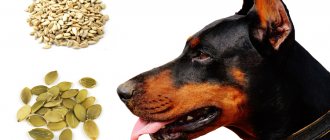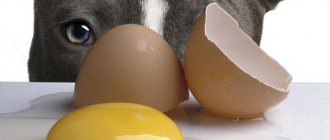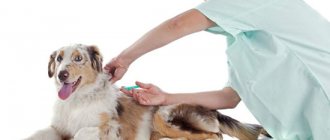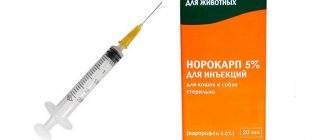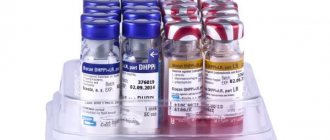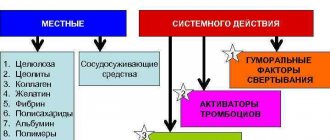Many dog owners are wondering whether their pets can be given liver.
Experts point out that chicken liver is not only allowed for dogs, but also useful, because it saturates their body with a large amount of vitamins and minerals.
In order for a dog to grow physically developed and have good health, he must eat properly. Normally, meat products should predominate in the animal’s diet.
Due to the fact that chicken meat is considered the most valuable in terms of biological composition, adding it to a dog’s food helps saturate the body with the required amount of amino acids and microelements.
How to choose the right product
Pet owners should know how to choose liver. In markets you can often encounter unscrupulous sellers offering low-quality products.
The first thing you should pay attention to is the color of the liver: it should be brown, without various impurities and inclusions. A yellow or greenish color of the product indicates that the chicken was sick with some kind of infectious disease.
It is worth considering the smell. Healthy and fresh liver smells good. An expired product has a sour aroma, and the owner must decide for himself whether it can be given to his pet.
Liver deficiencies
Before you start giving your dog liver, it is important to evaluate the possible risks and consequences. Despite the fact that offal such as beef or chicken liver contains a large number of useful elements, you need to be careful with its use.
Due to the fact that the liver contains a high concentration of retinol, an overdose or hypervitaminosis may develop when feeding a dog. The consequences of an overdose of vitamin A lead to roughening of the skin, specific growths on the bones, weakness of muscle fibers, and disturbances in the functioning of the digestive system.
In addition, when feeding liver to a dog, you need to be sure that the fattening bird did not receive various additives and hormonal substances. The dog may develop an allergic type reaction, up to and including anaphylactic shock (in some of the most sensitive animals).
Raw beef liver obtained from disadvantaged agricultural farms may contain helminth infections (liver flukes), which can cause serious problems in the functioning of the dog’s body.
There are a number of contraindications that you need to know before feeding your dog this offal.
- acute intolerance to the protein contained in chicken meat;
- failure of renal structures (in fact, the liver is a source of pure protein, the amount of which should be reduced in diseases of the renal system in pets);
- increased blood cholesterol levels;
- allergic type reactions.
It is not recommended to feed dogs liver that is frozen or obviously spoiled. Most of the negative consequences after a dog eats beef or chicken liver are associated with these factors.
In the absence of health contraindications, a properly stored liver is not only necessary, but also indispensable for dogs for normal growth, development and maintenance of the body’s immune forces at the proper level.
It is important to remember that excessive consumption of liver can provoke the development of not only food allergies, but also other disorders in the body. Nausea, upset stool, and skin rashes in the ears, armpits and groin areas may occur.
If you notice a specific reaction in your pet, you must immediately stop using offal to avoid serious consequences.
Features of using liver for dogs
As mentioned above, a dog at any age needs vitamins. Not only her health, but also her appearance depends on the correct diet .
When feeding a pet chicken liver, owners should know how to properly and how often introduce it into the diet, and in what form to give it to the dog: raw or boiled.
Raw product
Fans of a raw food diet point out that dogs can be fed raw offal, since wild animals feed exclusively on raw meat.
It should be taken into account here that even in a frozen liver, helminths can remain, which can withstand fairly low temperatures and long-term freezing. This suggests that a dog eating raw liver will definitely become infected with worms.
A domestic dog is not an animal that is adapted to life in the wild.
Raw meat can cause severe poisoning and disruption of the gastrointestinal tract in the animal.
Heat treatment
There is no dog that will refuse a piece of raw meat.
But veterinarians are against feeding pets in this way, so they recommend pre-cooking offal and only then giving it to the dog. The liver cooks quickly, so it retains its beneficial qualities even after heat treatment.
Evolution of diet
In the wild, wolves first consume the internal organs of their victims before moving on to the tough, less nutrient-rich muscles. They primarily consume organs such as the liver, heart and stomach. These organs are the best parts of the body in terms of the quantity and quality of nutrients they contain.
Do not forget that all dog breeds, from the smallest to the largest, descended from wolves and their ancestors. Therefore, supporters of a raw food diet, citing the origin of domestic dogs, recommend using raw meat and organs in the diet. Liver and other by-products, along with meat, are the main sources of protein in such diets. Other experts argue that the diet of domesticated pets has evolved significantly to mimic the human diet. Therefore, to maintain the health of a dog, it requires slightly different nutritional elements.
Advantages and disadvantages
The product in question is distinguished by its nutritional qualities. It contains a large amount of proteins, fatty acids, vitamin A and minerals.
If you introduce a little liver into your pet’s diet, it will only benefit the animal’s body. But it is worth considering some of the disadvantages of the offal.
The fact is that the liver contains a lot of vitamin A, and this can cause an oversaturation of the body with this component. This phenomenon leads to the appearance of bone spurs, muscle weakness and gastrointestinal pathologies.
Hormones and harmful additives from feed accumulate in the liver. Helminths also develop in it. All this can harm the animal.
How to give offal to a dog
The amount of by-products in a dog’s diet should not exceed 10-15%; it is enough to give them twice a week. But another feeding option is also possible - daily, in smaller quantities.
The amount of by-products depends on how the animal’s body reacts to them. Some pets cannot tolerate offal even in small quantities. Intolerance is manifested by indigestion, namely diarrhea and vomiting.
It should be noted that liver should not exceed 5% of the total diet. The liver contains large amounts of fat-soluble vitamin A, which in large doses provokes the formation of liver stones.
A smaller percentage of the diet should also be heart, which is considered a heavy protein that is poorly digestible. In large quantities, heart causes diarrhea.
A dog should be accustomed to offal from the age of 6 months, starting with small pieces. If you are intolerant to the product, it should be excluded from the diet.
It is recommended to boil offal for 15-40 minutes, with the exception of liver, tripe, tongue, udder, and kidneys. They are given raw.
How to cook properly
Many dog owners prefer to simply pour boiling water over the offal. They argue that you should not salt the liver, but rather mix it with buckwheat. It is this combination that enriches the animal’s body with folic acids.
Experts say that the liver can be boiled and stewed, but not fried, because during frying a large amount of fat is absorbed into the liver. To prepare a treat for your beloved pet, just boil the offal.
To prepare nutritious food, take 1 kg of liver, several cloves of garlic and a small amount of sunflower oil.
The liver is pre-soaked for at least 4 hours so that all accumulated harmful microelements are removed. When the drained water is clean, you can start cooking the product.
The liver is finely chopped and simmered in the microwave for 10-15 minutes or baked in the oven. When baking, place the prepared mass on a sheet and place in the oven for 25 minutes.
The baking tray should first be greased with sunflower oil. This recipe is suitable for dogs of any age.
How long to cook
Boiling is considered the fastest and easiest cooking option. The whole process takes no more than 10-15 minutes. With prolonged heat treatment, the liver hardens, its taste deteriorates and its beneficial qualities are reduced.
The complete cooking time also depends on the size of the cubes. Experts recommend testing the product more often for hardness and dryness. The finished dish is cooled and stored in the refrigerator for no longer than 3 days.
What by-products can be used
When feeding a pet, various types of such products are used. Here are the by-products you can (and even need) to give your dog:
- Liver. Can dogs eat beef liver? The organ serves to filter toxins, but does not accumulate them, which allows the product to be consumed. The liver is a source of vitamins A, B, iron, and folic acid. This food is especially beneficial for growing dogs. It is also recommended to give liver to male dogs before mating and to lactating females.
- Heart. Contains antioxidants and coenzyme Q10. The last component stimulates cell functioning and prevents their rapid aging. The composition also includes phosphorus, zinc, selenium, amino acids, and B vitamins. These substances strengthen the body, help build muscle, produce and store energy. Collagen and elastin found in the heart help strengthen joints.
- Beef kidneys are good for dogs. The product is rich in iron, zinc, vitamins A, B, E, K, and also includes fatty acids that have a beneficial effect on the skin and coat of the animal. Consumption of kidneys normalizes the functioning of the gastrointestinal tract.
- Udder. Since the product contains a lot of fat (there is less of it in the milk udder), it should be given to the dog in small quantities. At the same time, food is easily digestible and helps build muscle mass.
- Brain. Among the beneficial substances contained in this product are choline and lipids. The food has high nutritional value and is easily digestible. It is recommended to give brain to dogs during the rehabilitation period, as well as to males before mating.
- The parts of the stomach are the rumen and the abomasum. By-products contain a large amount of enzymes, animal protein, and amino acids. They also enrich the gastrointestinal tract with beneficial microflora, which promotes the digestion process. Metabolism improves, the blood is purified, waste and toxins are eliminated. The stomach has a specific unpleasant odor. But, despite this drawback, the product is recommended for use.
- Tails, legs, ears. These parts contain phosphorus, calcium, elastin and collagen. In addition, the products help train dog teeth.
- Cartilages (for example, scapular), heads. These parts contain protein, elastin, collagen. The trachea and diaphragm are very useful for the health of gums and teeth. The cartilage contains mucus inside, which causes diarrhea in the animal. Therefore, your pet should be accustomed to such food gradually, starting with small portions.
- Poultry offal. This category includes bones, paws, heads, necks, livers, hearts and stomachs of birds. The products are valued for their high protein and collagen content. Giblets are obtained from turkeys, ducks and chickens. This food is an excellent addition to your dog's daily diet. The heart, stomach and liver are rich in vitamins A and B, as well as zinc and iron. The paws, neck and spongy bones of chickens contain large amounts of potassium and phosphorus, so consuming them helps strengthen bones and muscles.
Important! Dogs should not be given tubular bones. The pet's stomach is not able to digest such a product. In addition, the sharp edges of the bones can cause injury to the mouth, esophagus and stomach.
Minced meat made from bones and cartilage is especially beneficial for a dog’s body. This product goes well with cereals, meat, and vegetables. Jellied meat is prepared from chicken paws.
For your information! Chicken skins should be excluded from your pet’s diet, as this product contains large amounts of harmful cholesterol.
Beef liver
Is it possible to feed liver to puppies?
Chicken by-product is very beneficial for puppies. This is explained by the fact that it contains many vitamins that have a beneficial effect on the formation of the nervous system and the entire body as a whole.
Liver can be given from 2 months, introducing it into the diet gradually . Initially, it is recommended to use it as complementary food, giving the puppy several pieces of treats per week.
If you include the product in the food more often, the baby may develop bone deformation or an allergic reaction, the symptoms of which are as follows:
- Severe itching of the skin.
- Rash all over the skin.
- Discharge from the eyes.
- Increased tear production.
- Discharge from the nasal cavity.
- Swelling of the muzzle.
- Unpleasant odor from the animal.
- Ear pain.
- Diarrhea and other gastrointestinal disorders.
Allergies always manifest themselves with clear symptoms, but do not occur in all animals. Therefore, before feeding your dog liver, you should conduct a test: give it a small amount of the product and see how the body reacts.
Useful properties of the product
Liver is a necessary product for dogs, as it is extremely useful. It contains a large amount of vitamin substances classified as fat-soluble (E, A, D), as well as mineral components (iron, zinc, sodium, copper).
Chicken liver contains a large amount of protein necessary for the development and normal functioning of muscle fibers, ligaments and tendons.
The positive effect of the offal is also noted in regulating the level of iron-containing protein - hemoglobin. The pet’s energy, health and general well-being depend on it.
The liver contains heparin, which has a direct effect on blood clotting factors. There is also an increased content of retinol, which affects the functioning of the visual organs and is responsible for preventing the development of stones in the bladder.
A veterinarian will tell you which liver to choose for your dog—chicken or beef. Among the beneficial properties of beef and chicken liver are:
- increased protein content, in quantities similar to dietary chicken breast;
- B vitamins, including folic acid, are necessary for the normal functioning of the hematopoietic, cardiovascular, and immune systems, as well as for the development of the nervous system in the fetus;
- the content of retinol, an important element for the proper functioning of the visual organs and the condition of the skin;
- positive effect on the functioning of the myocardium and vascular walls.
The content of riboflavin in beef liver has a positive effect on the absorption of iron. Natural acids in the by-product are necessary for females during the period of bearing puppies.
Beneficial nutrients in the liver improve the quality of the digestive system, and microelements such as iodine and selenium improve the functioning of the endocrine system.
Ascorbic acid, acting as an antioxidant, allows DNA synthesis.
Contraindications
The offal itself can be harmful only because it contains a lot of cholesterol.
Experts do not recommend introducing it into your pet’s diet in several cases:
- Old age of the dog.
- The presence of pathologies of the gastrointestinal tract.
- Kidney problems.
- Manifestation of food allergies.
- Pregnancy in females.
In all other cases, the liver, if properly processed, will not harm the health of the pet.
How to use it correctly in your diet
To avoid negative reactions to offal, it is important to follow the rules for their selection and storage, as well as adhere to your diet. In addition, it is necessary to take into account the pet’s age and state of health. Dogs can only be fed fresh offal that has been obtained from healthy animals.
On a note! If your pet has a sensitive digestive system, it should not be fed lungs, spleen, or kidneys. Brains and udders should also be excluded from the diet.
Some dogs are unable to digest even small amounts of offal. A negative reaction to such food is expressed in symptoms such as:
- diarrhea;
- vomit;
- skin irritations;
- hair loss;
- red spots;
- severe itching.
When feeding your four-legged friend with offal, you must adhere to the permissible volumes. Offal should be introduced into the diet gradually, from an early age. The share of by-products should not exceed 15% of the total diet. Offal is given every day in small portions as a supplement to the main menu, or meat is completely replaced with offal, but not every day, but only 1-2 times a week.
Important! It is impossible to completely switch to feeding offal, as they contain an insufficient amount of proteins. At the same time, the concentration of vitamins and minerals in them is, on the contrary, overestimated.
Proper use of offal in your pet's diet also involves cooking it (if required). Here you need to take into account a number of nuances. For example, liver subjected to heat treatment or exposure to low temperatures loses some of its beneficial substances, so it is recommended to feed dogs raw liver. However, in this case, the risk of helminth infection increases, since parasite larvae may appear in the liver. The product can be given in its raw form only after a veterinary check. In other cases, the liver will have to be boiled or frozen.
On a note! If there is a general maximum permissible percentage of offal in a pet’s diet, then individual varieties have their own norm. For example, the share of the liver should not exceed 5%.
The frequency of feeding is also important. In addition to the general rule, there are separate recommendations for different types of offal. For example, poultry giblets are given to dogs no more than 2 times a week. Poultry liver, heart and stomach can be given 2-3 times a week, but no more. Otherwise, the animal’s body will suffer from an excess of vitamin A, which will cause muscle mass to decrease and bone deformation to begin.
You can’t replace your pet’s entire diet with offal.
Raw
You can feed your dog raw giblets only after a veterinary check. If this has not been done, the product must be boiled or frozen. The food will lose some of its beneficial properties, but on the other hand, the animal will not suffer from possible negative consequences (diarrhea, vomiting, helminthiasis).
If the freshness of the product is in question, you should soak the offal in a baking soda solution for 20-30 minutes, and then rinse thoroughly with clean water. You can determine if food is stale by external signs. For example, a spoiled spleen darkens when cut, and the brains emit an unpleasant odor, secrete a thick, creamy liquid, and take on an earthy hue.
Pets can be fed raw heart without fear. As for the kidneys, before feeding they need to be cut in half and soaked in cold water. Rennet and tripe are also given raw. But before that, they are thoroughly cleaned of food residues and washed with clean water. The stomach is not subjected to heat treatment, since otherwise all enzymes are destroyed. Before feeding, the product is cut into pieces.
Dried
In addition to raw or cooked giblets, dogs are also given dried organ meats (for example, dried lung is an excellent treat for dogs). You can prepare them in different ways. This will be discussed below in the chapter on preparation.
Dried giblets are occasionally added to dry dog food. And most often with one goal - to enhance taste and smell. An example of such a product is Zoogourman food, which includes beef by-products. It is necessary to purchase such products with great caution, since offal from a sick or very old animal could be used to prepare the feed.
Recommendation! You can buy offal in bulk in any city. If you cannot find a quality product in your region, you can order home delivery from another city.
Dried food for dogs
